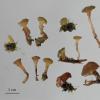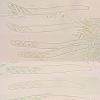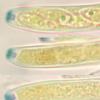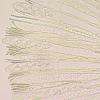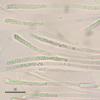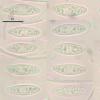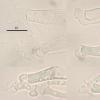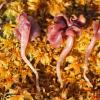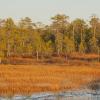
12-11-2021 00:03
Lepista ZacariasHi everybody,A week ago in my fiels trip I noticed

29-12-2025 17:44
Isabelle CharissouBonjour,J'aimerais savoir si d'autres personnes au

29-12-2025 17:12
 Bernard CLESSE
Bernard CLESSE
Bonjour à toutes et tous,Pourriez-vous m'aider à

29-12-2025 17:01
Gernot FriebesHi,I'm looking for help with this hyphomycete with

29-12-2025 08:30
Hello.A tiny ascomycete sprouting under Juniperus

29-12-2025 10:15
Hulda Caroline HolteHello, I found and collected this propoloid ascom

29-12-2025 09:38
Oskari VirtanenHi,could anyone help me identify this, I suspect P
Ascocoryne turficola appears here in late summer (night temperatures at the bog now near zero). It could be regularly found in ombrotrophic sedge-sphagnum communities, where it grows at leaf litter of Carex limosa, or at miscellaneous sphagnum-litter substrates. I have not checked its vital structures before, and previous descriptions were done based on rehydrated specimens. Now it is time to compare them with vital measurements).
The sizes do not differred very much, only asci some wider when alive, the same about paraphyses. Spore size of this year collection coincides well with previous measured from dry staff. But now it is possible to see that paraphyses tips filled with greenish vacuoles (green color of hymenium); and oil pattern of spores also there.
Vital measurements (done from two apothecia):
asci 132 (118–148) x 11.5 (10.3–14) (n=14); paraphyses 1.7–2.5 broad at tips (n=10); spores 16.2 (14.7–18.8) x 5.3 (4.8–5.9) (n=30).?

In both cases my living asci were longer but not as wide as yours.
there was some mistake in asci width: i remeasured the same pictures again and have added measurements from other three apothecia collected today.
Final sizes are there:
Asci 145 (120–163) x 11.5 (9.7–13.3) (vital; n=35; from three apothecia); spores 16 (13.9–18.7) x 4.9 (4.1–5.9) (vital; n=100; from five apothecia).?

i have some observation to add about this wonderful and rare species. This year i was lucky to observe several apothecia on my permanent plots in the raised bog in Khanty-Mansiysk vicinities (West Siberia).
Several features seemed interesting to me:
* The apothecia of A. turficola are quite long-living (up to 60 days). The fist appearance of one group of three apothecia was registered on 2 August, and they were fruiting until first frosts (-4C at night) on 29 September. By then i have collected them and there is a picture of this group on 29 September.
* The second observation is about color change. Young apothecia had olive-green hymenial surface, which then changed to light brownish and finally to purplish of the same color as the stem (as in the picture). The height of apothecia by this time was up to 5 cm, disc diameter 2.5 cm. Hymenial surface from flat and even when young become convoluted in old age.
* The apothecia were completely frozen (tough) in the morning of first frost (-4 C) and after that become loose in consistence, but it was still possible to withdrew them and make the picture.
We have quite abundant population of A. turficola in the bog where Mukhrino field station is located. Some observations we have already published in the paper. http://www.ugrasu.ru/education/institutions/rec-environmental-dynamics-and-global-climate-change-the-unesco-chair/UNESCO_journal/docs/7/EDCC_4_2_Filippova_Bulyonkova.pdf
It would be very interesting to continue studying this species in the area, and I would appreciate your possible suggestions on such research.
Nina.

There are scattered British and Irish records of this species; they seem to fall into the period 31 August - 21 October, with a solitary spring record - from Wales 10th April 2008 (determined by Brian Spooner, so will be OK). Something tells me we never get quite as cold as you do!
best wishes
Chris


